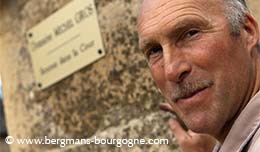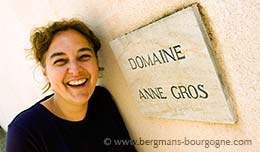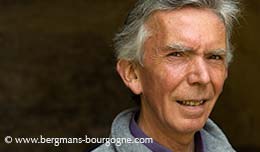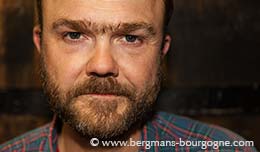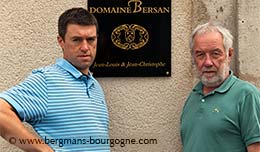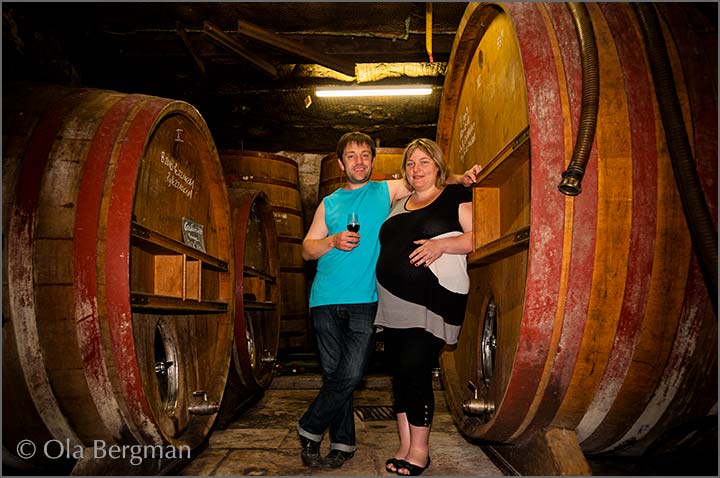
oulanges-la-Vineuse in the late 1960's had very little to do with wine. In terms of wine production the village was still recovering from the phylloxera and two world wars. Instead the villages around Auxerre in northwestern Burgundy were focusing on cereals and cherries. But slowly a few people in the area began planting vines. One of them was Michel Bernard at Domaine du Clos du Roi.
– The estate was created by my grandmother and my father in 1969. Coulanges-la-Vineuse has a long history, but 60–70 years ago the vines had almost completely disappeared. My father and a few others started planting and began bottling not so long after that, explains Magali Bernard, daughter of Michel.
There are more winegrowers in the village today. But production is still small. The appellation, Bourgogne Coulanges-la-Vineuse, covers 700 hectares, but only 135 are planted with vines. In total there are 15 winegrowers in Coulanges-la-Vineuse and the neighbouring villages. The size of the domaines varies from six hectares to 26 hectares.
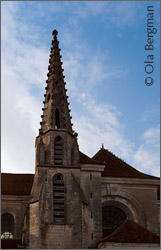 – Bourgogne Coulanges-la-Vineuse is almost only pinot noir, says Magali Bernard. Of the 135 hectares only 18 are chardonnay. The majority of the chardonnay is around the village of Migé. There are only a few hectares around Coulanges-la-Vineuse.
– Bourgogne Coulanges-la-Vineuse is almost only pinot noir, says Magali Bernard. Of the 135 hectares only 18 are chardonnay. The majority of the chardonnay is around the village of Migé. There are only a few hectares around Coulanges-la-Vineuse.
– In 2001, after six years at the Lycée viticole in Beaune, I began working here at the domaine, she continues. In 2004 I went to work in New Zealand for a few months to work at Pegasus Bay Winery and Mount Edward Winery, and since 2005 I am the big boss here at the domaine. In 2007 my husband Arnaud joined me.
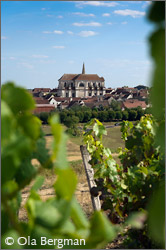 Domaine du Clos du Roi has 14 hectares of vines, all located around the village. With the exception of some Bourgogne Passtoutgrain and Bourgogne Grand Ordinaire all wines are Bourgogne Coulanges-la-Vineuse – red, white and rosé.
Domaine du Clos du Roi has 14 hectares of vines, all located around the village. With the exception of some Bourgogne Passtoutgrain and Bourgogne Grand Ordinaire all wines are Bourgogne Coulanges-la-Vineuse – red, white and rosé.
– I would say we are a very traditional domaine, says Magali Bernard. All our wines are aged in barrels or in foudres, wooden vats. We want to sell wines that have aged for a minimum of two years. For the evolution of the wines I think wood is the best, with the micro-oxidation that takes place.
Since her arrival at Domaine du Clos du Roi Magali Bernard has changed the wine portfolio. There are now three different cuvées of red Bourgogne Coulanges-la-Vineuse – the traditional one plus Cuvée Coline and Cuvée Chanvan.
– I haven't changed the traditional Coulanges. That's the same as when my father was making it. The white Coulanges I changed; my father didn't use any barrels. 15 per cent is fermented in new oak and 85 per cent in stainless steel vats, so we don't get too much oak aromas. The white Coulanges is a wine to be used as an aperitif or with fish.
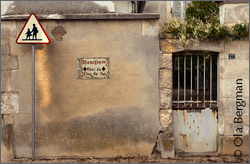 The Coline cuvée, named after Magali's and Arnaud's daughter, is a blend of two grape varieties - pinot noir and césar, 85 percent of the former and 15 of the latter. Originally Magali made a wine made from 100 per cent césar, but since this didn't fit within the regulations for the appellation the new cuvée saw the light of day in 2008.
The Coline cuvée, named after Magali's and Arnaud's daughter, is a blend of two grape varieties - pinot noir and césar, 85 percent of the former and 15 of the latter. Originally Magali made a wine made from 100 per cent césar, but since this didn't fit within the regulations for the appellation the new cuvée saw the light of day in 2008.
– It was a test, says Magali Bernard about the césar wine. The césar grape is a speciality of Irancy, Coulanges-la-Vineuse and Saint-Bris. Many use it to add more structure to the wine, but since we make lighter wines in Coulanges-la-Vineuse my idea was to try to make something different with the césar, not a full-bodied wine with lots of tannins.
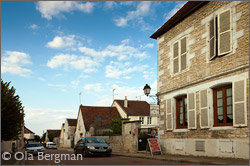 – We tried to make a césar wine that was very light. The fermentation took place in very big vats at very low temperature, 20°C to 25°C (68°F–77°F). It was interesting to do this, but since we are within the AOC we cannot do what we want. Bourgogne Coulanges-la-Vineuse cannot be 100 per cent césar.
– We tried to make a césar wine that was very light. The fermentation took place in very big vats at very low temperature, 20°C to 25°C (68°F–77°F). It was interesting to do this, but since we are within the AOC we cannot do what we want. Bourgogne Coulanges-la-Vineuse cannot be 100 per cent césar.
– Instead we are doing the Coline cuvée, but the idea is the same. How to use the césar for a light wine. This cuvée has a little bit more body than the traditional Bourgogne Coulanges-la-Vineuse, but not much.
Magali Bernard describes the césar vine's behaviour in the vineyard as very different to the pinot noir. Unpredictable is a word that sums it up.
– In the past there was only césar planted. Then it was replaced by pinot noir and gamay. There is a reason for that, she smiles.
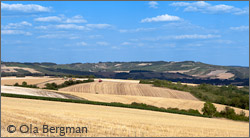 – The césar doesn't make a better wine than the pinot noir, but it is very interesting to blend the two grape varieties. The césar bunches are enormous. And some years you have a lot of grapes. Some years there is very little. So the césar is very difficult to work with.
– The césar doesn't make a better wine than the pinot noir, but it is very interesting to blend the two grape varieties. The césar bunches are enormous. And some years you have a lot of grapes. Some years there is very little. So the césar is very difficult to work with.
It may not be obvious, but the other cuvée, Cuvée Chanvan, is closely linked to the name of the domaine. Chanvan is a lieu-dit within the Bourgogne Coulanges-la-Vineuse appellation where Domaine du Clos du Roi owns three hectares.
– Chanvan is a very good parcel, says Magali Bernard. It is between Coulanges-la-Vineuse and Jussy (just north of Coulanges-la-Vineuse). The old name of this parcel was Clos du Roi, the clos of the king. According to old writings, the French king was very fond of the wines from Coulanges-la-Vineuse, Irancy and Auxerre. At that time, before the railway, these wines were considered as the best available in Paris.
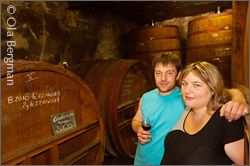 The area around Auxerre and Chablis is pretty much the northern limit for the pinot noir. Warmer years, such as 2003, certainly have an effect on the style of the wines. With global warming this may seen more frequently in the future.
The area around Auxerre and Chablis is pretty much the northern limit for the pinot noir. Warmer years, such as 2003, certainly have an effect on the style of the wines. With global warming this may seen more frequently in the future.
– It is not a bad thing, says Magali Bernard. The clients appreciate the different styles. There is the very light 2009 and there is the 2008 which has more structure. But if every year was warm it would be a problem, because people want the Bourgogne Coulanges-la-Vineuse to be a light, fruity and supple wine. When our old clients tasted the 2003 they thought it was interesting, but asked if we had some 2002's to sell.
– The big problem is the quantity. Our wines are not expensive, so we need the quantity to be able to keep the price down. If we were to have hot summers every year, which mean lower yields, it would be difficult for us to offer wines for five to seven euros per bottle.
© 2011 Ola Bergman










